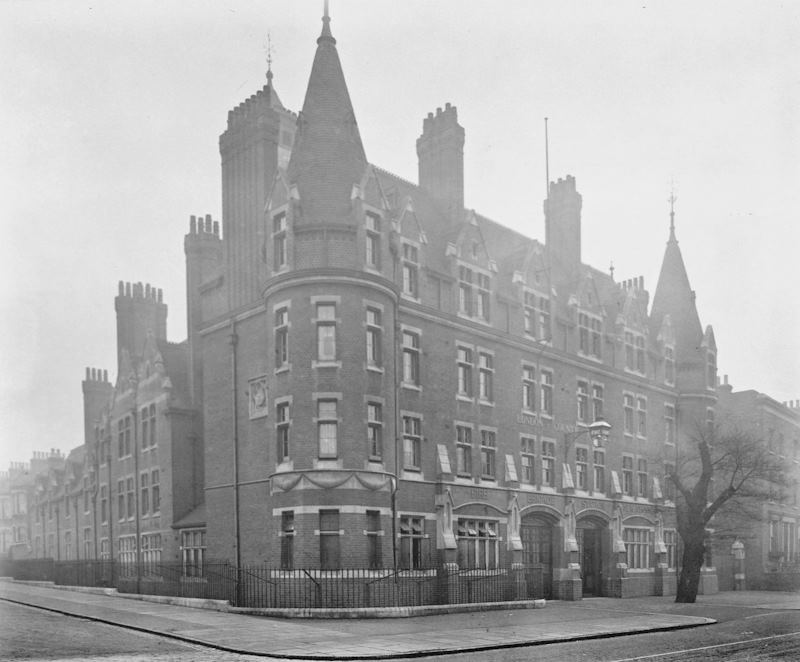
New Cross Fire Station in around 1900.
New Cross Fire Station is the oldest operational fire station in London. It opened in June 1894, as part of the Metropolitan Fire Brigade, and was designed by Robert Pearsall, chief architect of the Fire Brigade Section of the London County Council Architect's Department.
The station cost £16,000 and accommodated a steam fire engine and a manual fire pump, plus four fire escapes and a hose van in its two bay appliance room. A long ladder was kept in the station yard.
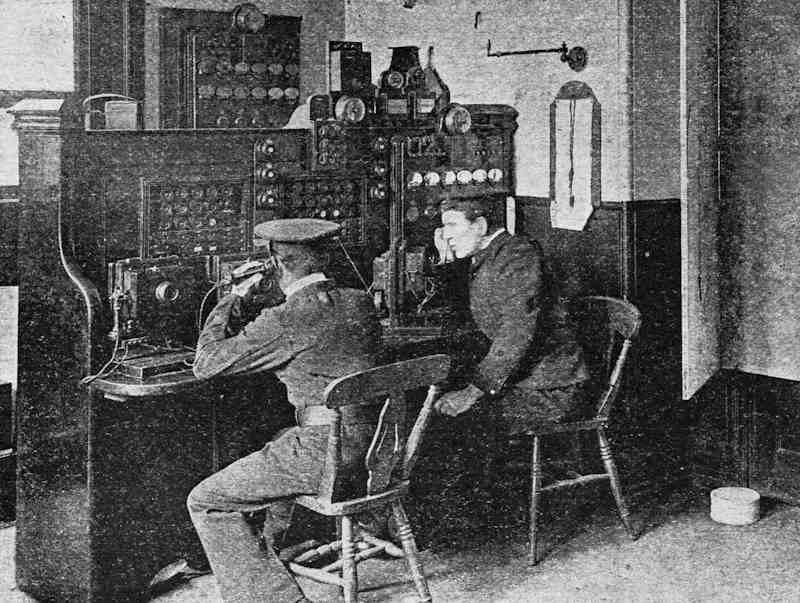
Monitoring the fire alarm control board where calls for assistance were received, in around 1890s.
New Cross was built as a superintendent station. It would have received all the fire calls from the street fire alarm systems in the area. The station then passed the call to the closest station to the fire alarm.
It was designed to accommodate a divisional superintendent, a foreman, 16 firemen, 2 coachmen and 2 pairs of horses. On the higher floors lived the families of the firefighters. In the basement there was a workshop to maintain firefighting equipment.
The station received a major upgrade in July 1912, providing additional housing for personnel. The appliance bay was expanded, incorporating the unused stable block and a sliding pole was installed to give quick access.
When motorised fire engines came into service the station was issued with a escape van, a pump fire engine and, by 1920, a turntable ladder.
The Auxiliary Fire Service (AFS) formed nationally in 1938, as part of the Civil Defence Service, to strengthen the resources of the regular fire services in wartime. It was also the first time women could join the fire service. Their duties included key roles such as despatch riders and staffing control rooms.
New Cross was one of the training schools for the AFS recruits in 1938. The training programme for a firefighter lasted 60 hours. It was split over a series of sessions. The training included included practical drills working with hoses, ladders and pumps.
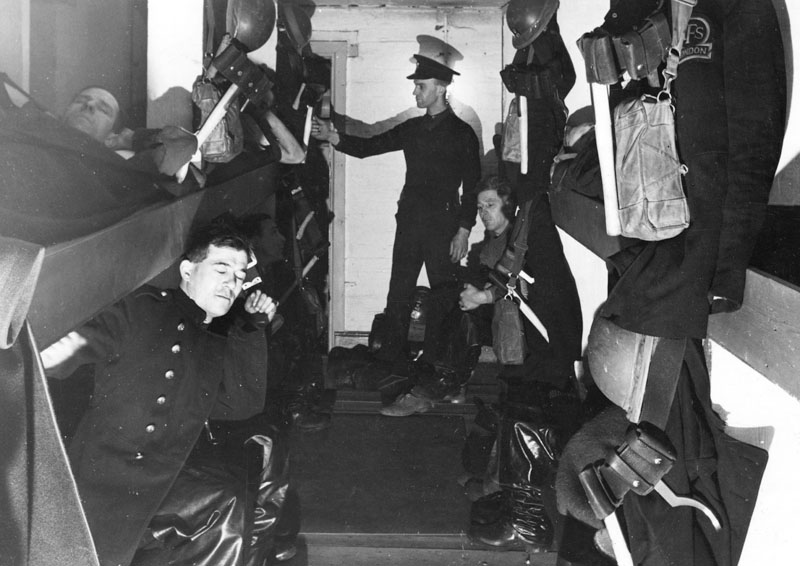
AFS firefighters in bunkbeds at New Cross sub station, Monson Road, around 1940.
When the Second World War started, New Cross had six Auxiliary Fire Service (AFS) sub stations attached to it. These sub stations were all based in local schools, which were:
George Arthur Roberts was the first Black man to join the London AFS in 1938 and he served at New Cross Fire Station. Roberts became a Leading Fireman in 1943 and was awarded the British Empire Medal (BEM) in 1944. This was for “… his general duties at New Cross Fire Station and for his part as a founder and pioneer of the Discussion and Education groups of the Fire Service."
In 1941, all fire brigades, including LFB, became part of the National Fire Service (NFS) and this included station New Cross.
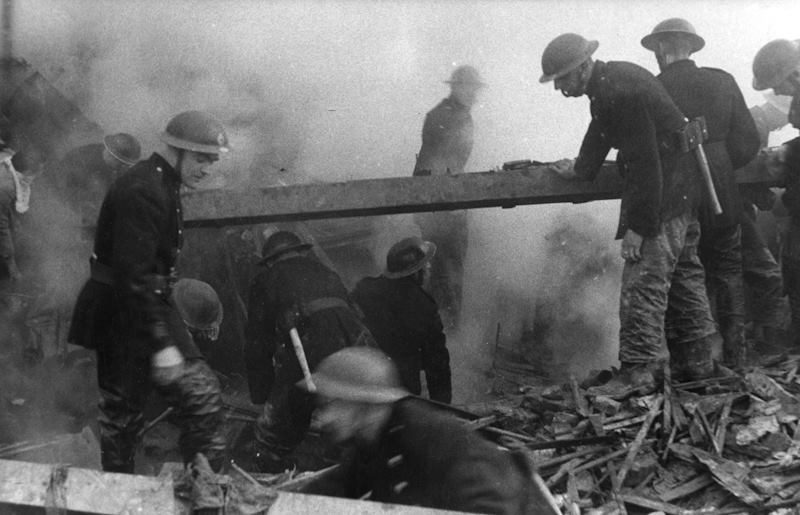
Firefighters moving debris after an air raid at Goodwood Road and New Cross Road, 23 November 1944.
The NFS was disbanded in 1958 and LFB was re-established. New Cross became Divisional Headquarters for the C Division, South East London.
In 1958 the two original appliance bays were increased to three, and the doorways widened to accommodate newer fire engines designs. In the late 1960s the stations turntable ladder was replaced with a foam tender.
The building was Grade II listed in November 2012 as a building of special architectural interest by Historic England due to its 'particularly imposing and grandly-conceived fire station building with a romantic, château-like exterior' and 'despite various alterations, clearly reflects the operating requirements of London fire service in the late C19 and early C20.'
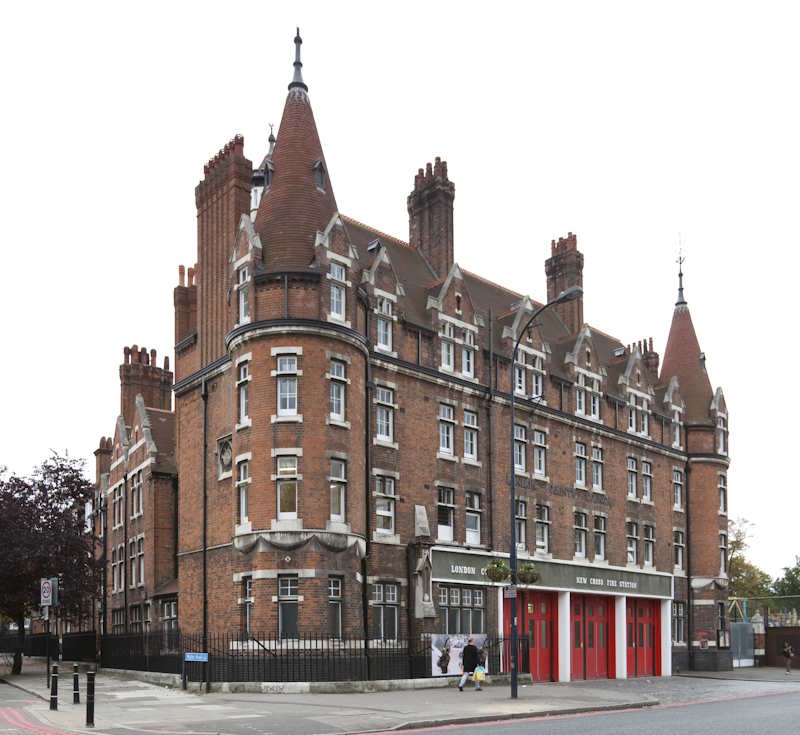
New Cross Fire Station, taken in 2009.
New Cross continues to serve its local community and keep London safe. There is a pump ladder fire engine based at the fire station, with a sub officer, a leading firefighter, and five firefighters on each of its four watches.
The firefighters will often assist colleagues in Deptford, Lewisham, Forest Hill and other stations when they are busy with other incidents or need more support vehicles.